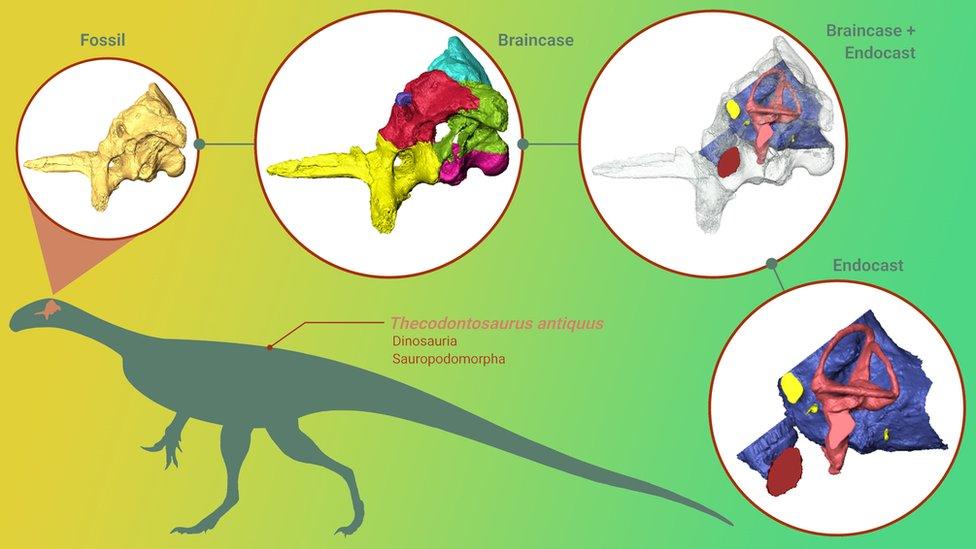Dinosaurs: Scientists have digitally rebuilt a dino brain!
- Published
- comments

The first Thecodontosaurus, known as the Bristol Dinosaur, was discovered near what is now Bristol Zoo in 1834
Ever wanted to know what a dinosaur's brain looks like?
Well, scientists from the University of Bristol have used special technology to do just that.
They've digitally rebuilt the brain of Thecodontosaurus, better known as the Bristol dinosaur and one of the earliest dinosaurs to roam the Earth.
This "pioneering reconstruction" of the brain has revealed what this particular dinosaur might have eaten as well as its ability to move quickly.
Thecodontosaurus lived in the late Triassic age some 205 million years ago and was the size of a large dog.
Although its fossils were discovered in the 1800s, scientists have only very recently been able to use imaging software to find new information without destroying them.
How did scientists digitally rebuild a dinosaur's brain?
The team created 3D models of the brain from CT scans - A CT scan uses x-rays and a computer to create detailed images.
The CT scans were made by digitally removing the bone from the rock and identifying details about the dinosaur's brain and inner ear.
This information was "previously unseen in the fossil".
"Even though the actual brain is long gone, the software allows us to recreate brain and inner ear shape via the dimensions of the cavities left behind", said Antonio Ballell, lead author of the study.
What else has been found?
Scientists from Bristol University used advanced imaging and 3D modelling techniques to digitally rebuild the brain of Thecodontosaurus
The researchers discovered that this dinosaur may have eaten meat, unlike its giant long-necked later relatives including the Diplodocus and Brontosaurus, which only fed on plants.
The analysis "uncovered many fascinating features, some of which were quite surprising" said Antonio Ballell.
"Whereas its later relatives moved around...on all fours, our findings suggest this species may have walked on two legs and been occasionally carnivorous," he added.
The digitally constructed brain also indicated a "control of balance and eye and neck movements, suggesting Thecodontosaurus was relatively agile and could keep a stable gaze while moving fast".
"This could also mean Thecodontosaurus could occasionally catch prey", although its tooth structure "suggests plants were the main component of its diet. It's possible it adopted omnivorous habits."
It's great to see how new technologies are allowing us to find out even more about how this little dinosaur lived more than 200 million years ago.
The researchers were also able to reconstruct the inner ears, to get a better idea of how well this dinosaur could hear compared to other species.
They found that its hearing frequency was "relatively high", suggesting "some sort of social complexity" and "an ability to recognise varied squeaks and honks from different animals."
Pretty cool! What do you make of this discovery? And which dinosaur species is your favourite? Let us know in the comments below.
- Published16 October 2020
- Published5 February 2019
- Published12 August 2020
